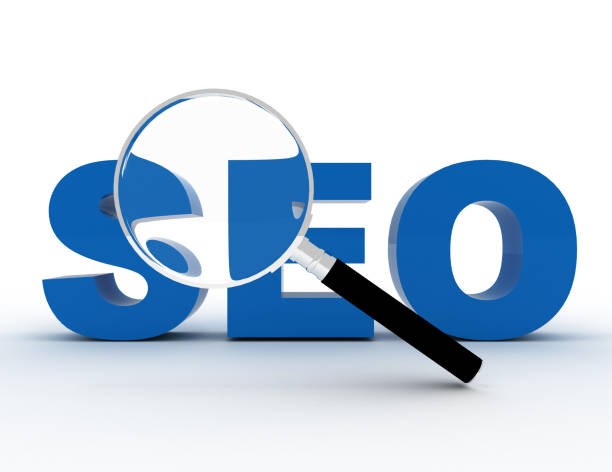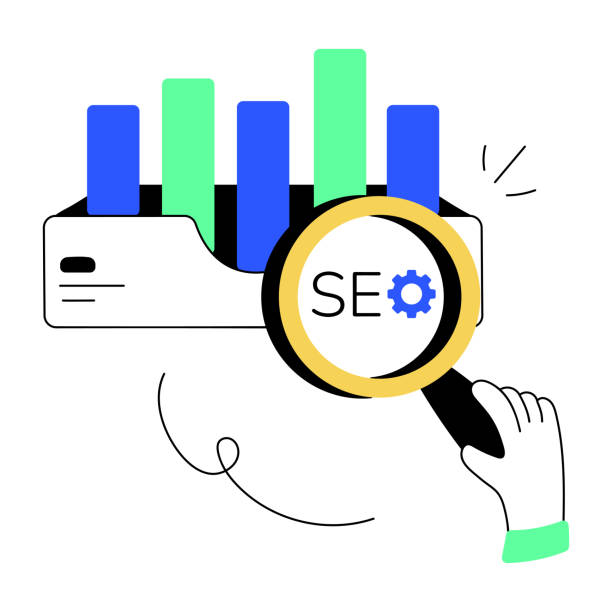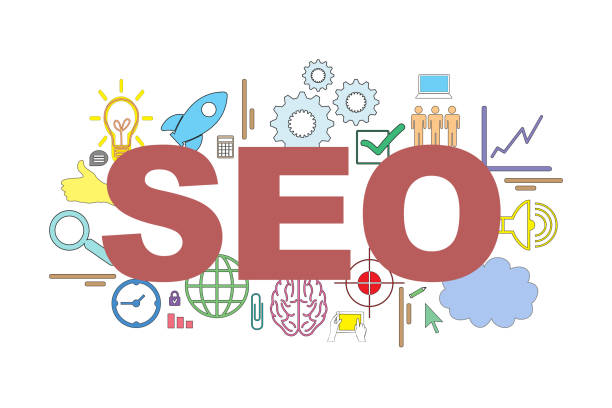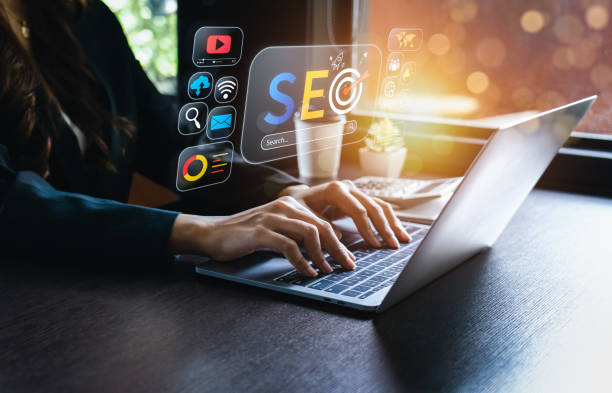Introduction to the Importance of On-Page SEO and Its Foundations

In today’s competitive web world, simply having a website is not enough; your website must be visible in search results to attract organic traffic.
This is where the concept of Search Engine Optimization, or SEO, comes into play.
Among the various types of SEO, On-Page SEO holds special importance, as it refers to all actions taken within your website to improve its ranking in search results.
These actions include optimizing content, site structure, and technical elements of web pages.
The main goal of On-Page SEO is to help search engines better understand the content of your pages and also to provide the best user experience to visitors.
A strong On-Page SEO strategy can make a significant difference in your website’s visibility and forms the foundation for SEO success.
To start, we must understand that On-Page SEO is not limited to just using keywords.
It is a comprehensive approach that includes optimizing page titles, meta descriptions, heading tags, textual content, images, and URL structure.
Each of these elements plays a vital role in sending positive signals to search engines.
For example, correct use of keywords in the title and meta descriptions can help Google better identify the topic of your page and display it to more relevant users.
Also, page load speed, mobile compatibility, and website information architecture are important factors in on-page optimization.
Ignoring any of these aspects can harm your website’s ranking.
Therefore, to achieve your website’s highest potential in attracting organic traffic, every piece of this puzzle must be given importance.
This educational and comprehensive approach helps you properly lay the foundations of your website’s SEO.
Are you frustrated with your online store’s low conversion rate?
Rasaweb is your definitive solution with professional e-commerce website design!
✅ Increase your sales and revenue
✅ Unparalleled user experience for your customers
⚡ Get a free consultation now!
Keyword Research: The Main Pillar of Successful On-Page SEO

Keyword research is the backbone of any successful On-Page SEO strategy.
Before you even write a single line of content, you need to know what your audience is looking for and what phrases they use to search.
This process goes beyond simply finding high-volume keywords; you need to understand users’ search intent.
Are they looking for information? Do they want to buy something? Or are they looking for a specific website? Understanding this helps you create content that precisely matches user needs, thereby sending positive signals to search engines.
For example, if a user searches for “how to do on-page SEO,” they are looking for guidance and educational content, not a product sales page.
To conduct specialized keyword research, you can use tools like Google Keyword Planner, SEMrush, Ahrefs, or even Google’s suggested searches.
These tools help you identify relevant keywords, their search volume, and competition level.
Also, look for “long-tail keywords.”
These phrases are usually longer and more specific, have lower search volume but bring higher conversion rates, and are very effective for on-page optimization.
For example, instead of focusing solely on “on-page SEO,” you can target phrases like “best on-page SEO methods for online stores.”
By precisely targeting keywords, your content will have a better chance of ranking in search engines and will attract more relevant traffic.
This analytical approach is the foundation of effective On-Page SEO.
Optimizing On-Page Elements for On-Page SEO and User Experience Improvement

On-Page elements are among the most important parts of On-Page SEO that directly impact search engines’ understanding of your content and user experience.
The SEO Title (Title Tag) is the first thing both users see in search results and search engines look at to understand the page’s topic.
It should be attractive, include the main keyword, and be less than 60 characters.
The Meta Description, although not directly affecting ranking, plays a vital role in click-through rate (CTR).
This short description should be enticing and encourage users to click.
In addition, proper use of Heading Tags (H1 to H6) for structuring content is highly important.
The H1 tag should be used only once per page and include the main keyword.
H2 and H3 tags are used to divide content into smaller, more understandable sections, which both increase readability for users and help search engines understand the content hierarchy.
Optimizing images by using appropriate Alt Text and compressing them to increase load speed are other vital aspects of on-page optimization.
All these elements must be designed and configured not only to be optimized for search engines but also to provide a positive user experience for visitors.
This is an analytical and explanatory approach to improving your pages.
| On-Page Element | On-Page SEO Goal | Important Notes | Impact on User Experience |
|---|---|---|---|
| Title Tag | Introduce page topic to search engine and user | Includes main keyword, max 60 characters, attractive and enticing | First user impression of content, impacts Click-Through Rate (CTR) |
| Meta Description | Summary of content to entice user to click | Includes keyword, approx. 150-160 characters, Call-to-Action (CTA) | Increases CTR, provides information before entering the page |
| Heading Tags (H1-H6) | Structure content and improve readability | Only one H1 (main keyword), logical use of H2-H6 | Improves readability, helps quick content scanning, better topic understanding |
| Image Alt Text | Explain image to search engines and visually impaired individuals | Includes relevant keyword, descriptive and accurate | Better accessibility, improves image SEO |
| URL Structure | Create readable and meaningful URLs | Short, includes keywords, use hyphens for separation | Easy sharing, better understanding of page topic |
| Keyword Density | Natural and appropriate use of keywords | Natural distribution in text, avoid keyword stuffing | Better readability, more relevant and less spammy content |
Producing Valuable and SEO-Optimized Content to Attract Audience

Content is king; this statement holds true in the world of SEO more than ever.
Producing valuable and SEO-optimized content is one of the most important pillars of On-Page SEO, which both helps attract an audience and shows search engines that your website is a credible and useful resource.
Your content should not only provide specialized and accurate information but also be engaging content to encourage user interaction.
This means writing articles that answer your audience’s questions, solve their problems, and entertain them.
When writing content, remember to naturally and organically incorporate your keywords into the text.
Keyword stuffing not only ruins the user experience but can also be detected by Google’s algorithms and lead to penalties for your website.
Instead, focus on content quality, comprehensiveness, and readability.
Use synonyms and related phrases (LSI keywords) so Google can better understand the semantic context of your content.
Also, content length can be important; studies have shown that longer, more comprehensive content generally performs better in search results because it can answer a wider range of user queries.
This type of optimization in On-Page SEO increases the credibility and trust of users and search engines in your content.
This is a guidance-oriented and very important approach for long-term success.
Did you know that 85% of customers check your company’s website before any interaction?
With Rasaweb, build the corporate website that deserves your credibility.
✅ Increase customer credibility and trust
✅ Attract high-quality leads
⚡ Get a free website design consultation
Effective Internal Linking Strategy to Increase Page Authority

Internal Linking is one of the most powerful tools in the On-Page SEO toolbox that is often overlooked.
An internal link not only helps users easily navigate your website and find relevant content but also allows search engines to better understand your website’s structure and distribute Link Equity across your pages.
The more internal links a page receives from authoritative and relevant pages, the higher its chance of ranking for its target keywords.
To create an analytical and effective internal linking strategy, look for opportunities to use relevant keywords (Anchor Text) as link text to refer to other pages on your website.
For example, if you are writing an article about “SEO basics,” you can link to a more comprehensive article about keyword research using the anchor text “keyword research.”
This not only helps the user get more information but also shows Google that these two pages are topically related.
Use internal links in all types of content, including blog posts, product pages, and service pages.
Also, give more internal links to pages that are highly important to you (such as main product or service pages) to increase their SEO power.
This guidance-oriented approach for On-Page SEO can significantly impact the improvement of your page authority.
Optimizing Images and Multimedia Files in On-Page SEO

Images and other multimedia files like videos are an integral part of the modern user experience and play an important role in On-Page SEO.
Optimizing these elements can help with page load speed, improve accessibility, and increase your chances of appearing in image search results.
One of the most important actions in this regard is using appropriate Alt Text for images.
Alt Text is a text description of the image content that is displayed if the image fails to load and is used by search engines and screen readers (for visually impaired individuals).
When writing Alt Text, make it descriptive, accurate, and include a relevant keyword (if possible and logical).
For example, for an image of a red laptop, the Alt Text could be “Red gaming laptop with RGB lighting.”
In addition to Alt Text, optimizing image file size is also crucial.
Large images can significantly slow down page load speed, which is an important ranking factor for Google and a frustrating factor for users.
Use appropriate image formats (such as WebP for the web), compress images without significant quality loss, and implement lazy loading to optimize speed.
These explanatory and educational approaches in on-page optimization help you provide a better user experience while improving your website’s SEO performance.
Using Schema Markup for Better Search Engine Understanding
![]()
Schema Markup, also known as Structured Data, is additional code added to your website’s HTML to help search engines (like Google, Bing, and Yahoo) better understand your content.
These codes help search engines identify specific types of content, such as a product, an event, a recipe, or a review.
By using schema, your content can appear as a Rich Snippet in search results, which includes additional information like star ratings, price, or cooking time.
These rich snippets can significantly increase your click-through rate (CTR) as they attract more user attention.
Implementing schema means helping search engines go beyond just reading words on your page and enabling them to understand the semantic relationships between entities.
For example, by using schema for a recipe, you’re not just telling Google you have text containing “cake”; you’re saying this text is a “cake recipe” with specific ingredients, cooking time, and user ratings.
This data clarity enables search engines to provide more accurate and relevant results to users.
Using schema is a specialized and very important step in modern On-Page SEO that distinguishes your website in search results.
Tools like Google Structured Data Markup Helper can help you implement these codes.
This explanatory approach is crucial for increasing visibility in search results.
| Schema Type | Use Case | Rich Snippet Example | Impact on On-Page SEO |
|---|---|---|---|
| Organization | Introduce information about an organization or company (logo, address, contact methods) | Displays logo and contact info in Google’s Knowledge Panel | Increases brand credibility, improves local search visibility |
| Product | Information about a specific product (price, availability, rating) | Displays price, star rating, and availability status in search results | Increases CTR for product pages, highlights key information |
| Review | Displays user ratings and reviews for a product or service | Displays star rating next to search result | Attracts user attention, increases content trust |
| Article | Specify content type as an article or blog post | Displays thumbnail image and publication date next to title | Improves article visibility in search results, displays supplementary information |
| Event | Information about a specific event (date, location, ticket price) | Displays event date and location in search results | Attracts audience for events, effective communication |
| Recipe | Information about a recipe (ingredients, cooking time, rating) | Displays food image, cooking time, and star rating | Attracts users interested in cooking, provides important info quickly |
| FAQPage | Organize frequently asked questions and their answers on one page | Displays questions and answers as an accordion in search results | Quickly answers user questions, increases SERP real estate |
URL Structure and Canonical Tags to Prevent Duplicate Content

URL structure and canonical tags management are two technical but crucial aspects of On-Page SEO that help search engines understand your website’s hierarchy and prevent duplicate content issues.
A good URL should be short, descriptive, include relevant keywords, and be readable for both humans and search engines.
For example, `yourwebsite.com/blog/seo-internal-guide` is much better than `yourwebsite.com/post?id=123&cat=456`.
Using hyphens (-) to separate words instead of underscores (_) is also recommended, as Google recognizes hyphens as word separators better.
Duplicate Content is a common challenge on websites that can harm your SEO credibility.
This problem occurs when identical content is available at different URLs.
The Canonical Tag is a tool that tells search engines which version of a page is the “original” and preferred version to be indexed.
By using the tag `<link rel=”canonical” href=”[main URL]”>` in the <head> section of the page, you can guide search engines on which URL should receive SEO credit.
This is especially important for e-commerce websites with similar products or blogs with multiple categories that might lead to duplicate URLs.
Correct implementation of these elements is an educational and specialized approach to maintaining SEO health and preventing potential problems.
Are you frustrated with your online store’s low conversion rate?
Rasaweb is your definitive solution with professional e-commerce website design!
✅ Increase your sales and revenue
✅ Unparalleled user experience for your customers
⚡ Get a free consultation now!
Website Speed and Mobile Responsiveness: Crucial On-Page SEO Factors

In the current era, where most users connect to the internet via mobile devices, website speed and Mobile-Friendliness have become crucial factors in On-Page SEO.
Google is increasingly focusing on Core Web Vitals and user experience.
Google has announced that page speed is a ranking factor, and slow websites can directly negatively impact your ranking.
Also, with Google’s “Mobile-First Indexing” approach, the mobile version of your website is considered the primary basis for indexing and ranking.
This means that if your website is not optimized for mobile, even if it performs excellently on desktop, you may face a drop in ranking.
To improve website speed and mobile-friendliness, you can take several actions.
These actions include optimizing images (as previously mentioned), compressing CSS and JavaScript files, using browser caching, choosing appropriate hosting, and using a Content Delivery Network (CDN).
Also, Responsive Design, which enables your website to automatically adapt to the user’s screen size, is essential to ensure mobile compatibility.
Tools like Google PageSpeed Insights and Google Mobile-Friendly Test help you evaluate your website’s status in these areas and identify weaknesses.
This is an important news-related and analytical part of on-page optimization that directly affects user experience and consequently your ranking.
Monitoring and On-Page SEO Tools for Performance Tracking

After implementing On-Page SEO strategies, your work is not over.
Continuous monitoring of website performance is crucial to ensure the effectiveness of your efforts and identify new opportunities for improvement.
SEO analysis tools help you track your progress, identify technical issues, and make data-driven decisions.
One of the most important and free tools is Google Search Console.
This tool provides you with valuable information about how your website is seen in Google search results, the keywords users find you with, indexing problems, and Core Web Vitals performance.
Google Analytics is also an essential tool for understanding user behavior on your website.
This tool shows you where visitors come from, how long they stay on your site, which pages they visit, and your pages’ Bounce Rate.
Combining Search Console and Analytics data gives you a complete view of your On-Page SEO strengths and weaknesses.
Also, paid tools like Ahrefs, SEMrush, and Moz offer more advanced features for keyword research, competitor analysis, and ranking tracking.
Using these SEO tools allows you to continuously evaluate your on-page optimization performance and refine your strategies to achieve the best possible results.
This thought-provoking content regarding continuous monitoring and improvement is the key to success in On-Page SEO.
Frequently Asked Questions
| Question | Answer |
|---|---|
| What is On-Page SEO? | It refers to the set of actions performed within a website to improve its ranking in search engines. |
| Why is On-Page SEO important? | Because it helps search engines better understand your site’s content and structure and improves user experience. |
| What are the most important On-Page SEO elements? | Title and meta descriptions, keywords, URL structure, quality content, image optimization, internal linking, and site speed. |
| How to optimize Title Tag and Meta Description? | The title should include the main keyword and be attractive, and the meta description should be an enticing summary of the content with relevant keywords. |
| What is the role of keywords in On-Page SEO? | Keywords help search engines understand what the page content is about and should be used naturally and intelligently in the text. |
| How is image optimization done for On-Page SEO? | By compressing file size, using descriptive file names, and filling the Alt tag with relevant descriptions and keywords. |
| What is Internal Linking and what is its use? | It is connecting different pages of the site to each other. This helps distribute Page Authority and improves search engine crawling. |
| What is the importance of site loading speed in On-Page SEO? | High speed improves user experience and is an important ranking factor for search engines like Google. |
| How does website responsiveness (Mobile-Friendliness) affect On-Page SEO? | Given the increase in mobile users, responsiveness is essential for providing a suitable user experience across all devices and for Google’s mobile-first indexing priority. |
| What are the important content-related factors in On-Page SEO? | Originality, quality, comprehensiveness, readability, proper use of headings (H1, H2,…) and regular content updates. |
And other services of Rasaweb Advertising Agency in the field of advertising
Smart Google Ads: Professional optimization for campaign management using SEO-focused content strategy.
Smart SEO: An effective tool for user interaction with the help of custom programming.
Smart Conversion Rate Optimization: A fast and efficient solution for digital branding with a focus on SEO-focused content strategy.
Smart Google Ads: A fast and efficient solution for improving SEO ranking with a focus on custom programming.
Smart SEO: A novel service for increasing online growth through optimizing key pages.
And over hundreds of other services in the field of internet advertising, advertising consultation, and organizational solutions
Internet Advertising | Advertising Strategy | Advertorials
Resources
Moz SEO Blog
Ahrefs SEO Articles
Search Engine Journal
Neil Patel’s Blog
? In today’s competitive world, a strong online presence is key to your success. Rasaweb Afarin, by providing comprehensive digital marketing solutions including responsive website design, SEO, and social media management, elevates your business. Build your digital future with us.
📍 Tehran, Mirdamad Street, next to Bank Markazi, Southern Kazeroon Alley, Ramin Alley, No. 6




